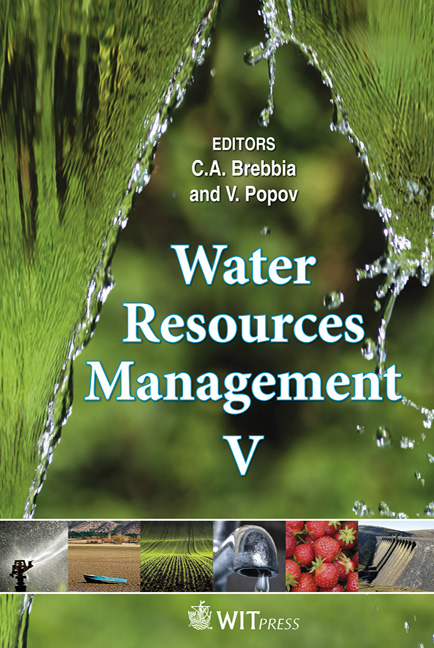Use Of A Predictive Model To Calculate E. Coli Survival In Waste Waters After Secondary And Tertiary Treatments
Price
Free (open access)
Transaction
Volume
125
Pages
7
Page Range
139 - 145
Published
2009
Size
352 kb
Paper DOI
10.2495/WRM090131
Copyright
WIT Press
Author(s)
G. A. Benítez, J. D. Arias, E. M. Rivas, P. Wrent, M. I. de Silóniz & J. M. Peinado
Abstract
The decay of E. coli in waste waters at mesophilic temperatures has been attributed to a complex mixture of environmental factors that include nutrient availability, the presence of microbial competitors or toxic compounds, the chemical properties of the waste water and the present microbiota. Consequently, the kinetics of the decay observed in different studies varies strongly with the conditions of both the strains and the effluent water used in each of them. To fit these data, several mathematical models have been tried, from log linear to sigmoid equations, but each of them fits only one type of behaviour. In this work we have used a model that is based on the assumption that the bacterial population is heterogeneous and the individual survival times follow a Weibull frequency distribution: N= N0* EXP(-B*tn) The model equation has been fitted to data obtained in our laboratory with different effluents. The value of the exponent, n, determines the shape of the curve. With values above one it produces curves with downward concavity, typical of clean waters, tertiary effluents or regenerated waters. The values below one (producing upward concavity) appear in non-treated waters with high BOD or secondary effluents. Keywords: self-regeneration, E. coli, Weibull equation, secondary effluent, tertiary effluent, inactivation kinetic.
Keywords
self-regeneration, E. coli, Weibull equation, secondary effluent, tertiary effluent, inactivation kinetic





